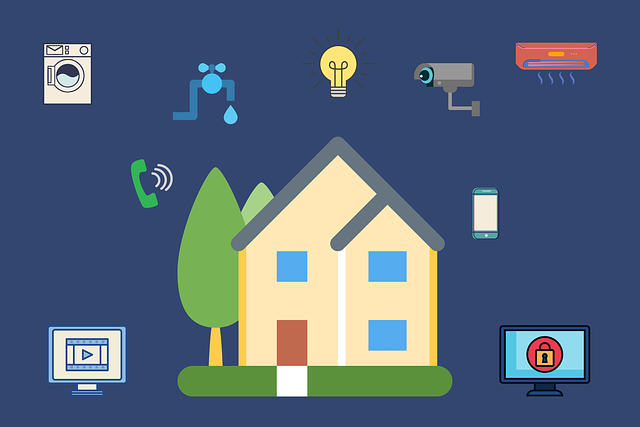Home Control Automation System
Generally, any smart version of any home device is connected to the Internet, and you can control it with your phone or companion app. This limits you to one solution, but many best home automation company turn their devices into an agnostic platform that allows you to use Apple’s Home app, Amazon’s Alexa, Google Assistant, and others to control your home. At this point, you can add new devices, try new software, and control everything in your home from anywhere.
Central control can be accessed via remote control such as a smartphone, tablet, or computer. You can use a touchpad on a computer or tablet device to control it remotely from anywhere in your home or from a smartphone.
Compatible Home Automation Solutions
You can use it for home security, control of appliances, monitoring energy consumption, as a personal assistant to care for the elderly and disabled, and much more. Compatible home automation solutions work with both automatic and manual voice control options, so you can use them in various ways and even have remote access capabilities.
Home automation products come in three different kits, including Comfort Control, Safe, Secure, and Smart, which allow you to customize them according to your needs and existing home systems.
Home automation lets you control one room ($129 for a sensor bridge) or multiple rooms ($249 for a five-sensor bridge) with notifications and notifications that you want to receive on your iPhone or Android device.
Home automation companies can control every aspect of your home without professional installation, including opening and closing doors, turning lights on and off randomly at different times, brewing your coffee pot, and operating your security and air conditioning systems.
Leading Smart Home Brands
The IFTTT service, supported by many leading smart home brands, allows you to connect various devices to the Internet and program them to respond to real-world events such as turning off lights at sunset. There are several outstanding devices to control everything, from your smart locks to your lights and appliances.
Try our free online tool to find out which smart home products are compatible with your home automation system, and use our guide to choose the best smart home devices for your home. Automation is rampant, more than a third of US consumers own at least two smart home devices, and it is getting faster and growing. A house with an internet connection and IoT devices is considered a smart home.
Smart home automation devices connect devices, switches, and gadgets to a central node, allowing you to control them safely and conveniently. Interfaces control home automation systems with wall terminals, tablets, desktop computers, mobile phones, applications, and web interfaces accessible from anywhere on the Internet. Home automation systems connect control units to the hub via a gateway.
Related: https://googdesk.com/category/tech/
IoT Based Home Automation Devices
With the help of automated devices connected to the Internet of Things with mobile applications, users can control many things in their homes, from lighting systems to security systems to household appliances. The electronic interface is a network of devices that connect via various communication protocols (e.g., Wi-Fi, Bluetooth, Zigbee, and others) to the Internet and is managed by controllers or voice assistants (e.g., Alexa, Google Assistant apps).
Home automation systems monitor and control home attributes such as lighting, air conditioning, entertainment systems, and appliances. Home devices connected to the Internet are an important part of the Internet of Things (IoT).
With Amazon Alexa and Google Assistant, you can set up routines and program your devices to work on several things at the same time, such as temperature adjustment or lighting when you come home. The control is at your disposal, and mobile applications offer the advantages of remote control that allows you to regulate what you do at any time.
Centralized Platform and Technology
To get the best out of the convenience of home automation, you need a centralized platform and technology to control the system and devices from one location. You can create a hybrid home environment in which you use a variety of hubs (such as Wink, Amazon Alexa, and Apple Home) to control your devices
But this can t prove tedious after a while. For example, your security system may require you to log in to one location to manage settings, while your smart thermostat might require you to log into another platform to turn on air conditioning.
Some cloud-based home automation systems have dedicated IP addresses for high-end computers, but many cloud-based systems are affordable and easy to use4. For example, some Nest cameras have slots for micro-SD cards to store footage locally.
Due to the nature of home automation devices, there may be security, data security, and privacy issues, and patches for bugs may not reach users with older or cheaper devices. Researchers are conducting user studies to determine the barriers consumers face in integrating these devices and systems into their daily lifestyles.
Tempting Automation Life
Automating life may sound tempting, but flipping a switch is much easier than reaching for your smartphone to turn on the lights. To illustrate what’s going on, we look at how existing standards and technologies work in reality in two different fields
Home automation system, with its increasing importance for small building management systems and small building automation on the one hand, and the smart home segment, where it is understood that connected devices are in some ways just remote controls for IoT-enabled devices in the home today. Either way, devices, and device networks give us seamless control over every aspect of your home and more.

